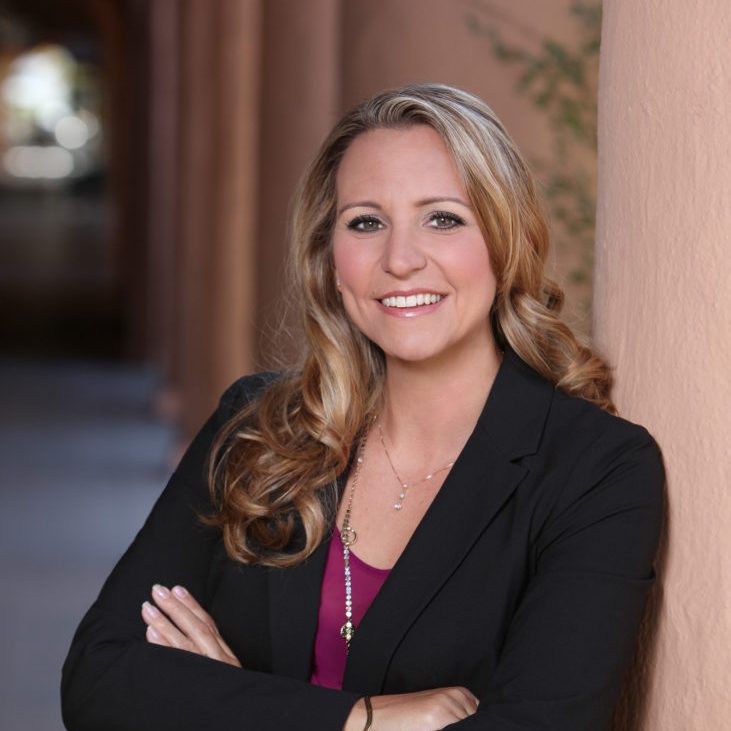Guest Post by CPA, Dominique Molina
This information is current, as of May 6, 2021
As we inch closer back to normal life, we have seen many beneficial programs provided by the Coronavirus Aid, Relief, and Economic Security Act (CARES Act) and the Families First Coronavirus Response Act (FFCRA). While most media coverage has focused on loans to employers such as PPP and EIDL, it is important to remember some of the lesser covered programs also included in the tax relief programs. In fact, eligible businesses may qualify to get cash back in some instances.
The employee retention credit (ERC) under the CARES Act offers a refundable payroll tax credit for certain wages and health plan expenses paid by businesses during the economic hardship. However, many business owners have uncertainty as to how to qualify when they have also received a PPP loan.
The paid sick leave and paid family medical leave credits also offer a refundable tax credit for qualifying wages and Medicare tax and health plan expenses.
These refundable tax credits are stackable for maximum benefit when used correctly. Read on to discover how to qualify.

Employee Retention Credit
This refundable tax credit gives employers the opportunity to recover funds used for certain wages and health plan expenses paid while the business is experiencing an economic hardship due to COVID-19. All employers are eligible unless they have received a PPP loan (unless it was repaid by May 18, 2020). In recently released guidance, the IRS clarified how a business can qualify if they acquired a company that had received a PPP loan.
Before changes to the law at the end of 2020, businesses did not qualify for ERC if they had repaid or had their PPP loan forgiven¹. Not so anymore! Now it is possible to get both the benefit of tax free PPP loans AND instant cash made available through the Employee Retention Credit.
Qualifying for the tax credit is simple. First, if a COVID-19 government order has either fully or partially suspended a taxpayer’s business, this qualifies as an economic hardship. Governmental orders include state and local governmental authority’s orders that fully or partially suspend operations limiting commerce, travel, or group meetings during any quarter in 2020².
Next, if a government order doesn’t suspend the business, it can still qualify when the company’s gross receipts for a calendar quarter in 2020 are less than 50 percent of its gross receipts in the same quarter in 2019³.
To calculate the credit, simply take qualified wages paid to employees, plus related health plan expenses during the period of the economic hardship. When using the gross receipts method to demonstrate economic hardship, the decline is over when gross receipts in a 2020 quarter are greater than 80 percent of its gross receipts in the same quarter in 20194.
Qualifying health care expenses include the employer and employee’s contributions for group medical, dental, and vision coverage, including amounts paid to health savings accounts (HSAs) and flexible spending accounts (FSAs).
The maximum amount of the credit is $5,000 per employee for wages paid between March 13, 2020, and December 31, 2020, and can be claimed across multiple quarters. To claim the credit, simply apply the applicable amounts against the employer’s share of Social Security taxes on Form 941.
For self-employed individuals and owners of partnerships, the credit is available only for qualified wages paid to unrelated employees and not for their own earnings.
____________
[1]COVID-19-Related Employee Retention Credits: Interaction with Other Credit and Relief Provisions FAQs 78 and 80.
[2] Notice 2020-62.
[3] Notice 2020-62.
[4] Ibid.
Paid Sick Leave Credit and Paid Family Leave Credit
According to the FFCRA, employers with fewer than 500 employees must provide paid sick leave and paid family leave to employees COVID-19 impacted between April 1, 2020, and December 31, 2020. Each employee is eligible for up to 80 hours of paid sick leave if they can’t work or telework due to a need to quarantine or seek a medical diagnosis for the pandemic.
Employees also qualify if they’re quarantined or required to care for a child because the child’s school or daycare facility is unavailable due to COVID-19 precautions. The amount of pay required is the regular rate of pay up to $511 each day ($5,110 total) for leave related to themselves or two-thirds of their pay up to $200 per day for leave to care for others or a child.
Once the employee has exhausted paid sick leave, eligible employees can receive up to 10 weeks of paid family leave for a total of $10,000 if unable to work or telework because they are caring for a child due to closure of the child’s school or daycare provider due to COVID-19 precautions5.
To make up for this financial hardship on businesses, Congress provides for a 100% tax credit for these amounts paid in 2020 to meet the requirements of FFCRA which expired at the end of 2020.
Although employers are no longer required to pay these benefits, any that choose to can continue to pay them and qualify for the 100% tax credit for amounts paid between January 1 and September 30, 2021. Up to 12 weeks of credits are available to a maximum credit amount of $12,000 (in 2021).
To determine the amount of the tax credit, take the related wages paid plus Medicare tax paid on the wages and add health care expenses for qualifying employees. Health care expenses not only include the employer’s expense of these costs, but also include the employee’s pre-tax contribution for the expense on group medical, dental, and vision coverage as well as HRA and FSA contributions6.
The program also permits a business to avoid paying Social Security tax on the qualifying employees’ wages by exempting them from the tax. As an added bonus, the credit is refundable so while it is applied against employer Social Security taxes on wages paid to all employees, it is refundable meaning when all tax has been paid, remaining credits provide a cash refund to the taxpayer or as a reduction to their next scheduled payroll tax deposit. To obtain the cash refund, use Form 7200, Advance Payment of Employer Credits Due to COVID-19
____________
[5]Pub. L. 116-127 sections 3102(b) and 5111(3); Pub. L. 116-136 section 3611(7).
[6] Notice 2020-57.

Examples
Example 1: A business calculated a total tax credit of $5,000 and has $18,000 of federal employment taxes due on wages for all of its employees during the quarter. The employer can withhold the $5,000 anticipated tax credit on its next federal tax deposit and instead deposit $13,000. As an alternative, the employer can pay the $18,000 deposit and apply the tax credit on its next quarterly Form 941 to obtain a $5,000 refund.
Example 2: Assume the same employer calculates it will qualify for $20,000 of tax credits in the next quarter and has $18,000 of federal employment taxes due for all of its employees during the quarter. The employer can choose not to pay its required federal payroll tax deposit. It can also file Form 7200 and receive a $2,000 refund. The taxpayer can also choose to receive a refund upon filing its quarterly Form 941.
As long as the business has paid qualifying wages to its employees during the quarter prior to the time of required payroll tax deposits, it has protection from penalties7.
____________
[7]Notice 2020-22.
Tax Credit Stacking
Rarely do taxpayers get to double or even triple dip. However, taxpayers can qualify for both the ERC and sick and family leave credits as well as the Work Opportunity Tax credits using the same employees. However, the same wages paid may not be used to qualify for more than one credit and cannot include wages paid to family members8. For example, when calculating the tax credit for sick and family leave, be sure to exclude wages used to qualify for ERC and Work Opportunity credits. In addition, remember that businesses who received PPP loans are not qualified for the ERC, but this exclusion does not apply to sick and family leave and Work Opportunity credits.
____________
[8]Treas. Reg. §1.51-1(e)(1)(i)(i).
Summary
The Employee Retention and paid sick and family leave credits are refundable tax credits against employment taxes for businesses with an economic hardship related to COVID-19. Up to 50 percent of the qualified wages paid and certain health care costs for employees after March 12, 2020, and December 31, 2020, qualify for ERC. The total credit is available for businesses that did not receive PPP loans up to $5,000 per employee.
The paid sick and family leave credit is available to cover required wages and health care costs paid to employees who can’t work due to their own diagnosis with COVID-19 or to care for a family member with COVID-19 or a child unable to attend school or daycare due to COVID-19. The total credit is $5,110 per each qualifying employee’s self-care leave pay and $2,000 for leave paid to care for family or a child. These amounts can increase by up to $10,000 to cover paid family leave to care for children affected by the unavailability of schools or daycare.
The credits can be combined along with the Work Opportunity Credit so long as the same wages are not used for more than one credit. Credits are used by applying them against required payroll tax deposits or quarterly Forms 941. Refunds are obtainable by filing Form 7200.
 Dominique Molina, CPA MST CTS is the co-founder and President of the American Institute of Certified Tax Coaches. As the driving force and visionary behind the San Diego-based company, Molina set out to change the way tax professionals approach tax planning. In 2009, Molina began to create an elite network of tax professionals including CPAs, EAs, attorneys and financial service providers who are trained to help their clients proactively plan and implement tax strategies that can rescue thousands of dollars in wasted tax. Her more than 12 years of hands-on experience in the accounting and business fields provide her with ample skills to accomplish this mission. Molina has successfully licensed tax professionals as Certified Tax Coaches across the country, creating a national network of highly qualified professionals who provide proactive service for their clients. This premier group of professionals features less than 200 specialists in 40 states who have achieved this very specialized designation.
Dominique Molina, CPA MST CTS is the co-founder and President of the American Institute of Certified Tax Coaches. As the driving force and visionary behind the San Diego-based company, Molina set out to change the way tax professionals approach tax planning. In 2009, Molina began to create an elite network of tax professionals including CPAs, EAs, attorneys and financial service providers who are trained to help their clients proactively plan and implement tax strategies that can rescue thousands of dollars in wasted tax. Her more than 12 years of hands-on experience in the accounting and business fields provide her with ample skills to accomplish this mission. Molina has successfully licensed tax professionals as Certified Tax Coaches across the country, creating a national network of highly qualified professionals who provide proactive service for their clients. This premier group of professionals features less than 200 specialists in 40 states who have achieved this very specialized designation.





